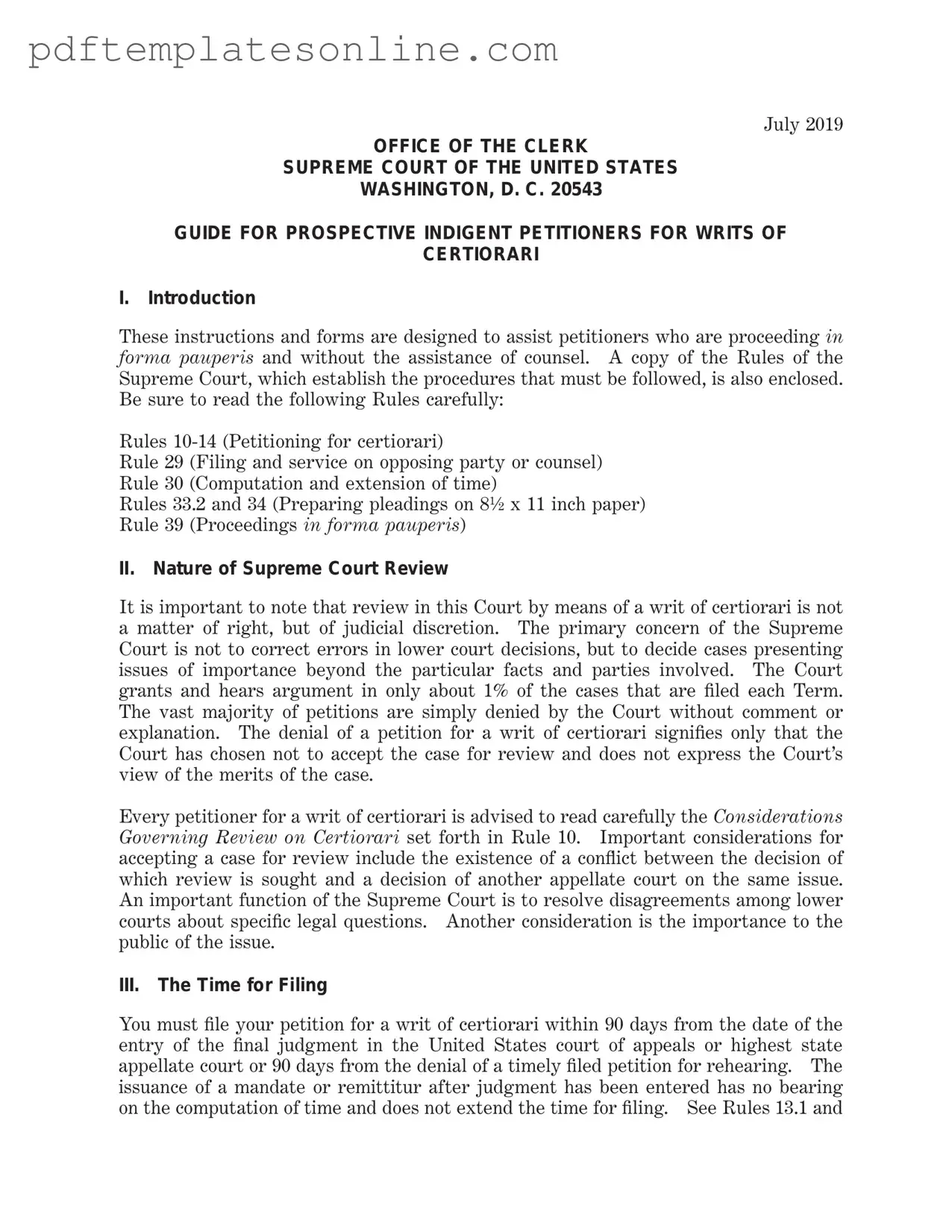Misconception 1: The Writ of Certiorari is guaranteed if a petition is filed.
Many people believe that submitting a petition for a writ of certiorari automatically means the Supreme Court will review their case. However, this is not the case. The Supreme Court exercises discretion in deciding which cases to hear. In fact, the Court grants review in only about 1% of the cases filed each term. A denial simply means the Court has chosen not to accept the case for review, without indicating any opinion on the merits of the case.
Misconception 2: All documents must be filed in person at the Supreme Court.
Some individuals think that they must physically deliver their documents to the Supreme Court. In reality, filing can be done in several ways. You can mail your documents with first-class postage, or use a third-party commercial carrier. This flexibility helps ensure that petitioners can meet the filing deadlines without needing to travel to Washington, D.C.
Misconception 3: There are no page limits for petitions.
Another common belief is that there are no restrictions on the length of a petition for a writ of certiorari. This is incorrect. The petition is limited to 40 pages, excluding certain preliminary pages. This limitation is designed to ensure that the Court can efficiently review the materials submitted.
Misconception 4: Personal information can be included without concern.
Many petitioners may not realize the importance of redacting personal information. Certain sensitive details, such as social security numbers and the names of minor children, should not be included in filings. This practice helps protect privacy and is in line with the redaction standards adopted by federal courts.
